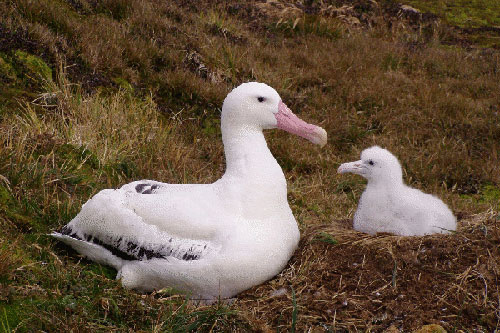Hannah Froy (Institute of Evolutionary Biology, University of Edinburgh, UK) and colleagues, writing in the journal Ecology Letters, look at ageing in relation to breeding ability in Wandering Albatrosses Diomedea exulans.
The paper’s abstract follows:
“The processes driving age-related variation in demographic rates are central to understanding population and evolutionary ecology. An increasing number of studies in wild vertebrates find evidence for improvements in reproductive performance traits in early adulthood, followed by senescent declines in later life. However, life history theory predicts that reproductive investment should increase with age as future survival prospects diminish, and that raised reproductive investment may have associated survival costs. These non-mutually exclusive processes both predict an increase in breeding performance at the terminal breeding attempt. Here, we use a 30-year study of wandering albatrosses (Diomedea exulans) to disentangle the processes underpinning age-related variation in reproduction. Whilst highlighting the importance of breeding experience, we reveal senescent declines in performance are followed by a striking increase in breeding success and a key parental investment trait at the final breeding attempt.”

Getting on: a 28-year-old Wandering Albatross guards its chick at Marion Island
Photograph by John Cooper
Reference:
Froy, H. Phillips, R.A., Wood, A.G., Nussey, D.H. & Lewis, S. 2013. Age-related variation in reproductive traits in the wandering albatross: evidence for terminal improvement following senescence. Ecology Letters DOI: 10.1111/ele.12092.
John Cooper, ACAP Information Officer, 14 March 2013

 English
English  Français
Français  Español
Español